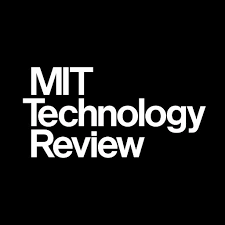
Weekly Business Insights from Top Ten Business Magazines
Extractive summaries and key takeaways from the articles curated from TOP TEN BUSINESS MAGAZINES to promote informed business decision-making | Since September 2017 | Week 345 | April 19-25, 2024

Shaping Section | 3
Three ways the US could help universities compete with tech companies on AI innovation
By Ylli Bajraktari | MIT Technology Review | April 19, 2024
Extractive Summary of the Article | Listen
The ongoing revolution in artificial intelligence has the potential to dramatically improve our lives—from the way we work to what we do to stay healthy. Yet ensuring that America and other democracies can help shape the trajectory of this technology requires going beyond the tech development taking place at private companies.
Research at universities drove the AI advances that laid the groundwork for the commercial boom we are experiencing today. Importantly, academia also produced the leaders of pioneering AI companies.
But today, large foundational models, or LFMs, like ChatGPT, Claude, and Gemini require such vast computational power and such extensive data sets that private companies have replaced academia at the frontier of AI. Empowering universities to remain alongside them at the forefront of AI research will be key to realizing the field’s long-term potential. This will require correcting the stark asymmetry between academia and industry in access to computing resources.
Academia’s greatest strength lies in its ability to pursue long-term research projects and fundamental studies that push the boundaries of knowledge. The freedom to explore and experiment with bold, cutting-edge theories will lead to discoveries and innovations that serve as the foundation for future innovation. While tools enabled by LFMs are in everybody’s pocket, there are many questions that need to be answered about them, since they remain a “black box” in many ways. For example, we know AI models have a propensity to hallucinate, but we still don’t fully understand why.
Because they are insulated from market forces, universities can chart a future where AI truly benefits the many. Expanding academia’s access to resources would foster more inclusive approaches to AI research and its applications.
The pilot of the National Artificial Intelligence Research Resource (NAIRR), mandated in President Biden’s October 2023 executive order on AI, is a step in the right direction. Through partnerships with the private sector, the NAIRR will create a shared research infrastructure for AI. If it realizes its full potential, it will be an essential hub that helps academic researchers access GPU computational power more effectively.
Yet even if the NAIRR is fully funded, its resources are likely to be spread thin. This problem could be mitigated if the NAIRR could focus on: a select number of discrete projects; should use large-scale GPU clusters to improve and leverage the supercomputer infrastructure the US government already funds; should explore ways to reduce the costs of high-end GPUs for academic institutions; and lastly, recent export control restrictions could over time leave some US chipmakers with surplus inventory of leading-edge AI chips – in that case, the government could purchase this surplus and distribute it to universities and academic institutions nationwide.
3 key takeaways from the article
- The ongoing revolution in artificial intelligence has the potential to dramatically improve our lives—from the way we work to what we do to stay healthy. Yet ensuring that America and other democracies can help shape the trajectory of this technology requires going beyond the tech development taking place at private companies.
- Research at universities drove the AI advances that laid the groundwork for the commercial boom we are experiencing today. Importantly, academia also produced the leaders of pioneering AI companies.
- But today, large foundational models, or LFMs, like ChatGPT, Claude, and Gemini require such vast computational power and such extensive data sets that private companies have replaced academia at the frontier of AI. Empowering universities to remain alongside them at the forefront of AI research will be key to realizing the field’s long-term potential. This will require correcting the stark asymmetry between academia and industry in access to computing resources. USA’s National Artificial Intelligence Research Resource (NAIRR) is an effort to address this asymmetry.
(Copyright lies withthe publisher)
Topics: Technology, Academia, Industry, Artificial Intelligence
